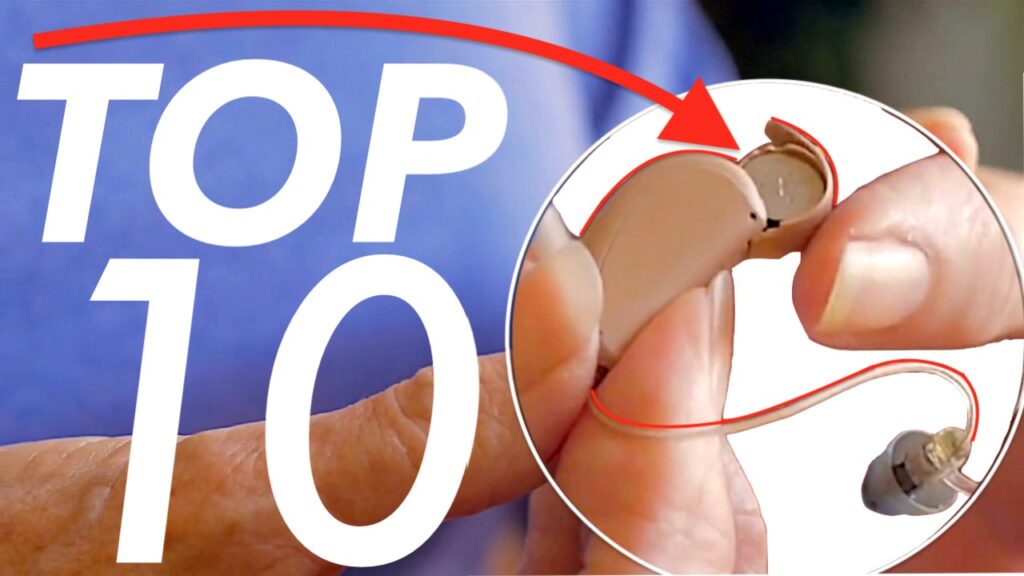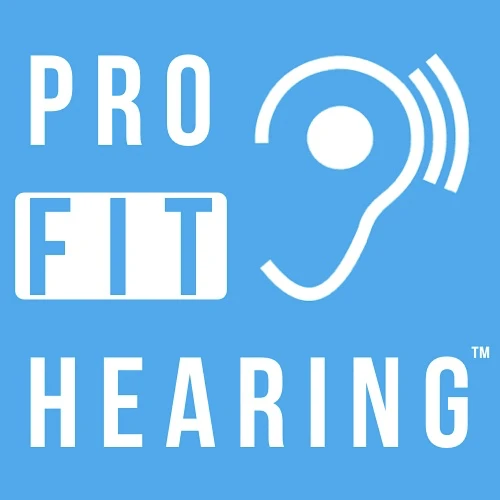Top 10 Hearing Aids Facts You NEED to Know

Top 10 Hearing Aids Facts You NEED to Know
Today’s latest hearing aid technology can absolutely change your life. Today, you’ll learn the top 10 surprising facts about hearing aids.
SUBSCRIBE to our YouTube channel for weekly videos!
Hi, I’m Dr. Derek – audiologist, audio engineer, and musician with ProFitHearing.com bringing you the best insight in today’s latest hearing aids, headphones, and audio technology to improve your life. If you have concerns about your hearing, always consult with your local physician or audiologist.
If you’re interested in hearing aids, check out my free eBook HERE.
Fact #1: Hearing aids improve quality of life.
Hearing aids help people with hearing loss reconnect and communicate with the people around them.
Hearing loss is often gradual, so we don’t realize how much sound we may be missing.
With today’s latest hearing aid technology, you can hear and understand speech better so that you can feel connected to those around you.
Fact #2: Hearing aids are customized for you.
A hearing aid can be custom fit to the exact shape of your ear. An impression of the ear is made and then used to build the hearing aid’s case or earpiece. This provides the most comfortable fit.
In addition to the physical fit of the device, a hearing aid’s sound settings are fine tuned to the user’s specific hearing test results. These settings are programmed into the hearing aid.
The hearing aid can automatically adjust the sound depending on the environment around you, or the user can be provided with manual settings which can be activated with a hearing aid button or remote.
Fact #3: Hearing aids are available in a variety of styles.
Hearing aids can be very small and hide deep inside the ear canal or they can be larger and sit behind the ear.
Available styles from smallest to largest are: invisible in canal IIC, completely in canal CIC, in the canal ITC, in the ear ITE, receiver in canal RIC, and behind the ear BTE.
The style of hearing aid you choose can be a matter of personal preference, or a particular style may be recommended by your hearing healthcare provider based upon the degree and configuration of your hearing loss.
You’ll want a hearing aid that’s easy to use and also provides adequate volume for your hearing loss.
Fact #4: Hearing aids connect wirelessly
Hearing aids will now connect wirelessly to your devices via Bluetooth.
You can call someone on your smartphone and hear the person’s voice streamed directly to your hearing aids. The other person can also hear your voice which is transmitted via the phone or hearing aid microphone.
You can also stream sound from other compatible Bluetooth devices to your hearing aids. An advantage to using Bluetooth hearing aids instead of earbuds or headphones is that the sound is custom tailored to your hearing loss for the best possible sound quality.
There’s also TV devices that stream the TV sound to the hearing aids for better speech understanding. This also helps you reduce incoming noise from the room, so you can more easily hear the television.
Fact #5: Hearing aids offer many different features.
Many hearing aids today offer advanced sound processing to improve overall sound quality and speech understanding.
Hearing aids can improve the sound quality with artificial intelligence, noise reduction, directional microphones, and a telecoil for use with the phone.
You also have access to automatic and manual settings, rechargeable or disposable batteries, and wireless accessory devices.
Additional hearing aid features could include a smartphone app to access extra features or to control your hearing aids, health and data tracking, and remote hearing aid programming with your hearing healthcare provider.
Fact #6: Hearing aids are not always necessary.
A hearing test is required to determine whether a hearing aid is appropriate. Your hearing healthcare professional will determine whether a hearing aid would be helpful to you.
Certain types of hearing loss may require other devices like a cochlear implant or bone anchored hearing aid. It’s also possible that certain types of hearing loss can be treated medically.
Your physician and audiologist will review your hearing test to determine which treatment is best.
Fact #7: Hearing aids require an acclimation period.
Hearing aids are custom tuned to your degree and configuration of hearing loss, and the hearing aid’s amplified sound takes some time to adjust to.
Initially, the sound of a hearing aid may be unnatural and sound noisier then you’re used to. However, your brain will adjust to this new sound quality and you’ll hear more clearly than you did before.
It’s important to wear your hearing aids regularly, so that you can adjust to them and receive the most benefit.
Fact #8: Hearing aids can be expensive.
Professionally fit hearing aids can cost thousands of dollars each, however some insurance plans may provide benefits for hearing aid purchases. Check with your insurance provider for details specific to your insurance plan.
Also ask your hearing healthcare professional if their clinic offers payment plans for hearing aids.
If you’re looking for a cheaper alternative to professionally fit hearing aids, ask your hearing healthcare provider whether you should consider over the counter hearing aids or assistive listening devices.
Fact #9: Hearing aids need regular care and maintenance.
Hearing aids should be cleaned regularly with a cleaning brush to remove any ear wax buildup.
You also want to make sure that you open the battery doors at night. This will shut off the hearing aid and help save the battery.
If you have rechargeable hearing aids, make sure to put them in the charger every night before going to bed.
Your hearing healthcare provider can check your hearing aids once every 6 months to ensure that everything is working correctly. They can replace parts of the hearing aid as needed to optimize the sound quality.
Fact #10: Hearing aids need to be replaced eventually.
Hearing aids can wear out over time due to daily exposure to the elements like heat, moisture, ear wax, and sweat.
Hearing aid technology continues to advance so consider upgrading in the future so that you can benefit from the latest sound processing and best sound quality.
Also if you experience increased hearing loss in the future, a more powerful hearing aid may be required.
Which of these hearing aid facts surprised you the most? Let us know in the comments and consult a local physician or audiologist if you have concerns about your hearing. If you’re interested in learning more about today’s latest hearing aid technology, go to https://www.youtube.com/profithearing and check out all the videos on our YouTube channel.
-Dr. Derek
